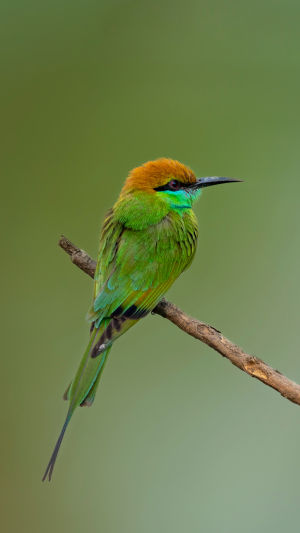Hummingbirds, also known as nature's jewels, are among the world's smallest birds. Here is a comprehensive introduction to these captivating creatures:
1. Appearance: Hummingbirds have petite bodies, typically measuring 5 to 9 cm in length.
Their feathers display a mesmerizing array of colors, including shades of green, blue, red, purple, and more.
Their wings beat rapidly, enabling them to hover effortlessly in the air and achieve remarkable speeds in flight.
2. Distribution: Hummingbirds predominantly inhabit the American continent, with a particular concentration in Central and South America.
They thrive in diverse environments such as tropical rainforests, alpine regions, and even our own gardens.
3. Diet: Hummingbirds are nectarivorous birds, relying on nectar as their primary food source.
Their long, slender beaks allow them to access the sweet nectar hidden within flowers.
In addition to nectar, hummingbirds supplement their diet with insects, spiders, and pollen.
4. Breeding: During the breeding season, hummingbirds engage in intricate courtship dances and aerial displays to attract mates.
Male hummingbirds showcase their charm through vibrant plumage and striking colors.
Female hummingbirds construct nests and incubate eggs, often laying multiple clutches throughout the year.
5. Conservation Status: Certain hummingbird species face the threat of extinction due to factors such as habitat loss and environmental pollution.
Protecting these remarkable birds and preserving their habitats is crucial for maintaining ecological balance and preserving biodiversity.
Hummingbirds possess a fascinating blend of delicate size and vibrant plumage that captivates observers, making them a natural wonder.
Their elegant flight and reliance on nectar contribute to their enchanting presence, adding a touch of beauty and magic to our world.
Hummingbirds primarily inhabit the American continent, with Central and South America being their main strongholds.
They can be found in various ecological regions, including:
1. Tropical Rainforests: Hummingbirds thrive in the undergrowth and canopy layers of tropical rainforests.
These warm and humid environments, teeming with lush vegetation, provide abundant nectar sources and a plethora of insects.
2. Alpine Regions: Certain hummingbird species have adapted to life in alpine regions.
They can be found in higher elevations, including mountainous areas like the Andes and the Rocky Mountains, where they have adapted to the unique challenges of these environments.
3. Grasslands and Open Areas: Some hummingbirds also inhabit grasslands and open areas.
These habitats offer a profusion of flowering plants and ample open spaces for hummingbirds to find nectar and insects.
4. Gardens and Human Settlements: Due to human activity, some hummingbirds have successfully adapted to life in gardens and urban areas.
They are known to frequent human-grown flowers as a reliable source of nectar and insects.
Overall, hummingbirds possess remarkable adaptability, enabling them to find suitable habitats in diverse geographical and ecological settings.
Their ability to thrive in various environments showcases the vast range of their preferred living areas.
While hummingbirds are treasured avian species, they face several conservation challenges.
To protect these charismatic birds, the following measures are essential:
1. Habitat Protection: Preserving and safeguarding hummingbird habitats is paramount.
This entails conserving tropical rainforests, alpine regions, and other natural ecosystems to ensure the integrity and suitability of their habitats.
2. Plant Conservation: Given their reliance on nectar, safeguarding the plants crucial to hummingbirds is vital.
Efforts should focus on preserving and restoring the flowering plants that serve as their primary food sources, ensuring healthy populations and biodiversity.
3. Combating Illegal Trade: Illegal capture and trade pose significant threats to hummingbirds.
Strong actions should be taken to combat these activities, including robust law enforcement and stringent penalties for offenders.
4. Education and Awareness: Raising public awareness and promoting education about the importance of hummingbirds and their conservation needs are crucial. Disseminating information and providing training can foster community involvement in hummingbird conservation efforts.
5. Scientific Research: A comprehensive understanding of hummingbird ecology, migration patterns, and population dynamics is essential for effective conservation.
Conducting scientific research and collecting data on hummingbirds can support the development of targeted conservation strategies.
6. International Cooperation: Protecting hummingbirds necessitates collaboration across borders.
International organizations, governments, NGOs, and communities should collaborate, share experiences and best practices, and work together to advance hummingbird conservation efforts.
By implementing these measures, we can help protect hummingbirds and their habitats, ensuring their continued survival and reproduction.
Safeguarding hummingbirds not only contributes to ecological balance but also helps protect the interconnected web of plant and animal species that rely on them.





